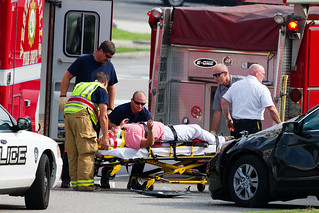 Personal injury law has something of a bad reputation. Personal injury solicitors are derided as ‘ambulance chasers’ and viewed as untrustworthy. Injury lawyers are viewed with suspicion, if not outright hostility. The negative public perception of injury claims lawyers isn’t helped by the seemingly wall-to-wall TV ads which are on from morning until early evening. With this level of saturation, an advert for PPI claims, a talking Meerkat or even a gratingly jaunty Opera Singer provide light relief. The terminology used in these ads is part of our daily lexicon – ‘make a claim’, ‘no-win-no-fee’, ‘damages’ and so on.
Personal injury law has something of a bad reputation. Personal injury solicitors are derided as ‘ambulance chasers’ and viewed as untrustworthy. Injury lawyers are viewed with suspicion, if not outright hostility. The negative public perception of injury claims lawyers isn’t helped by the seemingly wall-to-wall TV ads which are on from morning until early evening. With this level of saturation, an advert for PPI claims, a talking Meerkat or even a gratingly jaunty Opera Singer provide light relief. The terminology used in these ads is part of our daily lexicon – ‘make a claim’, ‘no-win-no-fee’, ‘damages’ and so on.
Personal injury law in the UK
However, what haven’t made it into our daily vernacular are the terms which underpin personal injury law – ‘delict’ (‘tort’ in England), ‘duty of care’, ‘summary cause action’ and so forth. Personal injury law (or the law of negligence as your solicitor would call it) is a vast and occasionally complex area of law that encompasses pretty much every ‘wrong’ a man, woman or company can inflict on another. From illness-inducing invertebrates ensconced in beverage bottles, to falling bags of flour, right through to professionals providing unreliable information, the law of negligence has had to consider many of the myriad actions and consequences of human conduct.
Purpose of compensation / ‘damages’
One salient fact which rarely comes through in the sensationalist headlines is that compensation or ‘damages’ is designed to put you in the position you would have been in, ‘but for’ the negligent act (or omission) which resulted in your injury. This is often missed as sensational tabloid headlines decry a payout in the hundreds of thousands for someone who suffered a seemingly insignificant injury. Obviously this is not a perfect science. It’s difficult to put a price on the loss of a limb, or an injury to an internal organ but the law tries as best it can to award an amount commensurate to the injury or loss. In addition, compensation can be claimed for loss of amenity, the cost of care and the cost of altering your lifestyle as a result of your injuries. It becomes easier to calculate loss when the loss in question is financial (or ‘pecuniary’ as the law calls it). Nonetheless this can involve a detailed computation using something akin to actuarial tables. Once your personal injury lawyer arrives at a figure, this is then proposed as a reasonable level of compensation to the other side, and to the court. Normally a process of negotiation follows during which your personal injury solicitor fights tooth-and-nail to get you a figure as close to the top of the proposed sum as possible. Again, these parts of the process rarely make it into the sensational tabloid headlines.
Fighting your corner
Personal injury solicitors such as Lawford Kidd provide a valuable service for a great many people who have suffered a loss which wasn’t their fault. They achieve redress for people who have been wronged. The roots of this branch of our law date back to Roman times and, fascinatingly, have their basis as a way to preserve a peaceful society. In ancient times a financial payment was intended to head off retribution being taken or a blood-feud developing. It is easy to scorn personal injury lawyers and claims companies and scoff at the seemingly ridiculous levels of compensation that are awarded. However, the media never tell the full story. And it’s a sure-fire bet that if we were injured, and it wasn’t our fault, we would want someone to fight our corner.
Image courtesy of Lee J Haywood on Flickr






